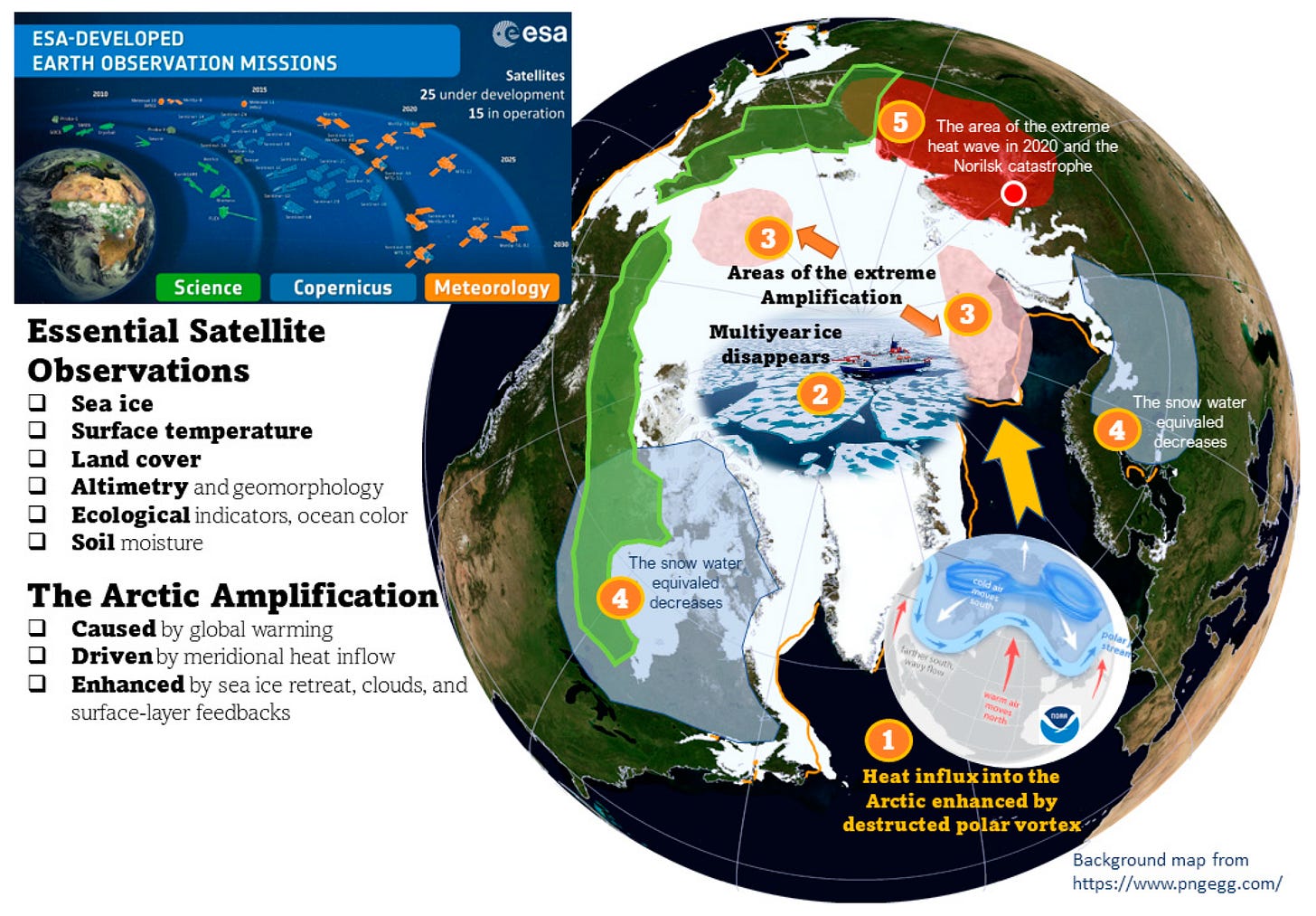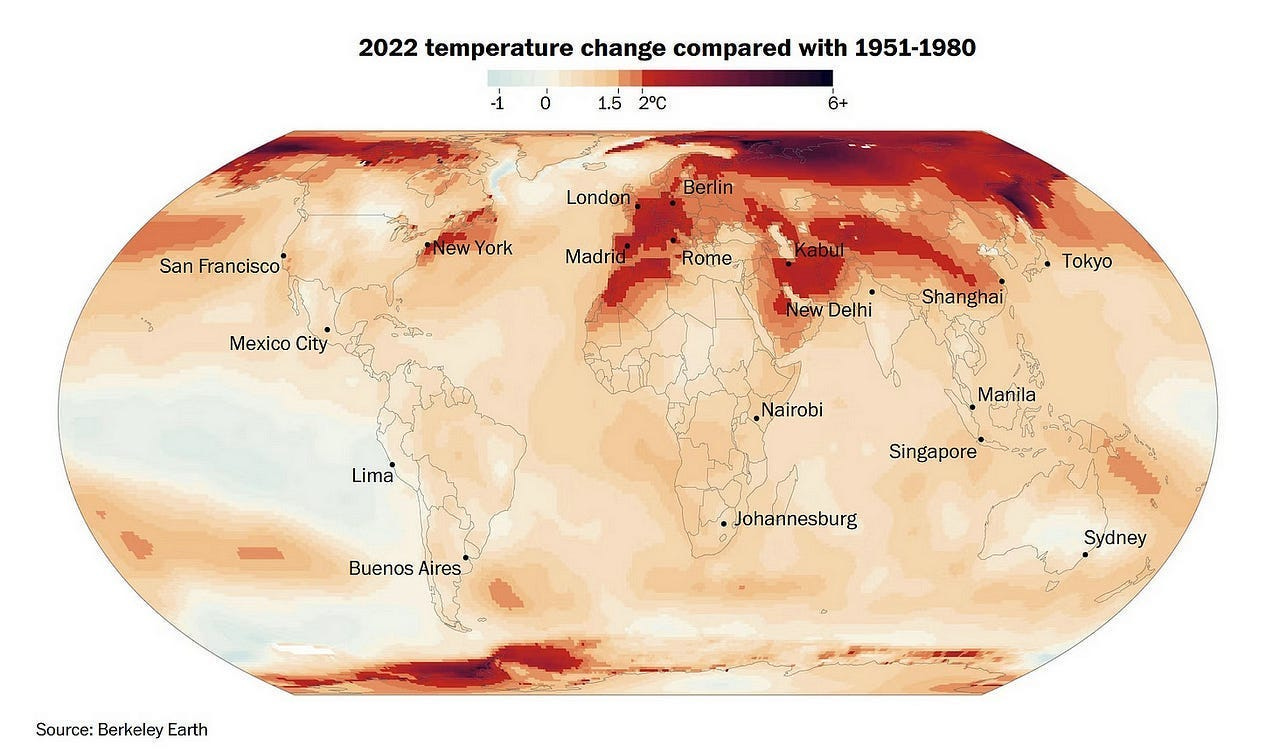Arctic Amplification — Understanding why the Polar Zones are warming 4X faster than the rest of the planet.

The ARCTIC is warming much, MUCH FASTER than the rest of the Earth.
Why is that?
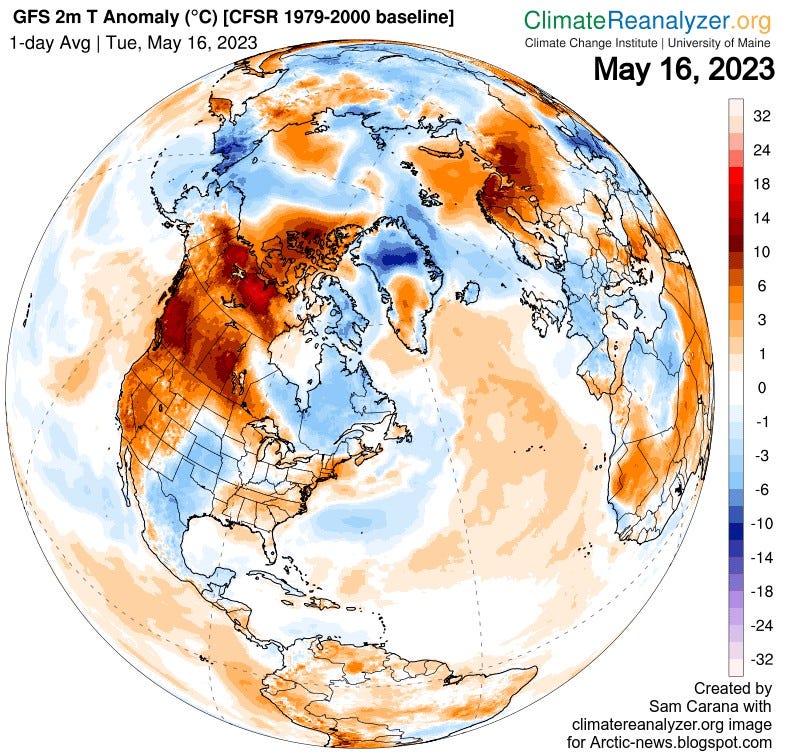
The term for this is “ARCTIC AMPLIFICATION” or “AA”.
Here's how it works.
Let me explain Arctic Amplification using a familiar “easy to visualize” analogy. It's easy to get bogged down in details when thinking about the Climate System. But, as explained in Part 01 of this User Guide, the Earth’s Climate System can be stripped down to a very basic, very easy to understand level.
The Earth’s Climate System stripped down to it's most basic level.
HEAT enters at the Equator—→HEAT flows to the poles—→HEAT exits into space.
The DIFFERENCE between the Amount of HEAT that ENTERS the system each year and the Amount of HEAT that LEAVES, is basically the amount of heat energy IN THE SYSTEM that translates into the Global Mean Temperature.
That's it.
That's the Climate System stripped down to it’s most basic level.
Now of course things get much more complex when you start drilling down into the details. But, in the end the Climate System is about HEAT. Where it comes from, how it flows, where it goes, and what happens when it gets there.
If you want to understand the Climate System, “follow the HEAT”.

So,
Everyone who has ever had a car, knows that when you turn it on, the engine gets hot. Combustion engines produce heat. Combustion means “to burn”, and burning things releases HEAT ENERGY.
In fact, combustion engines produce so much HEAT, that most of them will overheat to the point of self destruction if not adequately cooled. In larger combustion engines this cooling is done with water. Although there are a few “air cooled” exceptions like the VW Beetle, generally auto engines are cooled using water or a “coolant” fluid.
So, let's do a thought experiment. Let's imagine that we turn on the engine and let it idle. In a few minutes the engine warms up and a “homeostatic” balance is established. This means; that the engine warms up, reaches a certain temperature, and then STAYS at that temperature.
It reaches a point of “homeostasis” or “balance”. Where the temperature doesn't go up or down. The system becomes stable or “static”.
That's how HEAT ENGINES work. Or rather, the ones that don't overheat, catch fire, and burn up, work that way.
Once our engine has “warmed up” we can measure the ENERGY flow through the system and quantify how it works. At this point the engine is in “idle”, which is the COLDEST it can be while the engine is running. The only way to make it colder, would be to turn it off. Hitting the gas to “rev it” will make it HOTTER.
IDLE is the LOWEST\COLDEST ENERGY STATE possible for a running engine.

If our thought experiment engine is “well designed”. What happens at idle is something like this.
ENERGY enters the system - in our example it's 5 units.
ENERGY is “lost” warming the engine up - say, 1 unit.
WATER pulls ENERGY out of the engine into itself - 4 units.
ENERGY, in the WATER, arrives at the radiator - 4 units.
ENERGY is “radiated away” into the air - 4 units.
WATER enters the system - at 0 units.
Cycle repeats until fuel runs out.
Once this state of “balance” is reached, the engine can run indefinitely without ever overheating.

Now, what happens when we add ENERGY to our engine?
When we increase the input ENERGY.

Basically, one of two things will happen.
CASE ONE: The Radiator has “extra” capacity and “eats” the extra HEAT ENERGY.

TOTAL ENERGY in system — 6 units (1 unit warming engine + 5 units in the system + 0 units in the water).
In this case the NET EFFECT of increasing the input ENERGY by 1 unit was a +1 unit increase in the total amount of ENERGY in the engine system.
CASE TWO: The Radiator has “no extra” capacity.
Case Two is a “Warming Feedback Loop”.

Because the engine is going to get hotter and hotter over time. The excess ENERGY in the system has nowhere to go, and ACCUMULATES.
While the engine was idling this wasn't a problem. Five units of energy entered the system, 1 got pulled into warming the engine, 4 went to the radiator, 4 got radiated away, ZERO left over. The system was in balance.
When we increase the input ENERGY to 6 units things change. Six units of energy enter the system. The engine pulls 1 unit out, because this is a constant based on the physical design of the engine. Adding more input energy doesn't increase this number.
So, the water cooling the engine takes in 5 units of ENERGY. It's hotter than when the engine was idling.
In Case One, the radiator had extra capacity. It did its job and radiated all the energy in the water away into the air. There was no accumulation of ENERGY in the system.
In this case the radiator has no excess capacity. It can only pull 4 units of ENERGY OUT of the system, no matter how much ENERGY ENTERS the system.
In Case Two, there’s an extra 1 unit of ENERGY “left over” after the energy entering the radiator is processed. This leftover energy stays in the cooling water and gets fed back into the engine. One unit of ENERGY has accumulated in the water.
The REALLY IMPORTANT thing to SEE here is that this isn't the “End of the Warming”. This +1 unit increase in the engine temperature is just the IMMEDIATE THERMAL RESPONSE to increasing the energy entering the system. As long as the system is out of balance, ENERGY will keep building up in the engine.

Because now, the water cooling the engine is HOTTER.
Now, the water is already carrying 1 unit of ENERGY leftover from it's first cycle through the engine. This time, when it takes in the 5 units of ENERGY leftover from the input. Instead of it going into the radiator carrying 5 units of ENERGY it goes in carrying 6.
The amount the radiator can radiate is still 4 units. In this case, that's a constant. It cannot increase. Now, the water leaving the radiator for the next cycle will be carrying 2 units of ENERGY.
Each cycle of the engine increases the amount of ENERGY accumulating in the system. The SPEED of this accumulation is the “RATE of WARMING”.
Rates of Global Warming 1850-2020
1850-1975 = 0.06C per decade.
1975-2015 = 0.18C per decade.
2015-2023 = 0.36C per decade.
The RATE of WARMING is INCREASING.
It's easy to see how this goes. The next cycle of the engine the water will be carrying 3 units of ENERGY when it leaves the radiator. The next cycle 4 units, then 5 units. At which point the water cannot take any ENERGY from the engine because it has the same amount of ENERGY in it, as the engine.
Quick, how much ENERGY is in the engine system at that point, what's the total amount?
TOTAL ENERGY in system — 11 units (1 unit warming engine + 5 units in the system + 5 units in the water).
In this case the NET EFFECT of increasing the input ENERGY by 1 unit was a +6 unit increase in the total amount of ENERGY in the engine system.
The effect of ACCUMULATION, is the AMPLIFICATION of INPUTS.
That's the lesson of this engine.
Now let's consider Arctic Amplification.

How does our conceptual model of the Climate System explain it?
We know, that 80% of the Energy that the Earth captures from the Sun starts at the Equator.
We know, that this Energy moves through the oceans and the atmosphere FROM the equator towards the two poles.
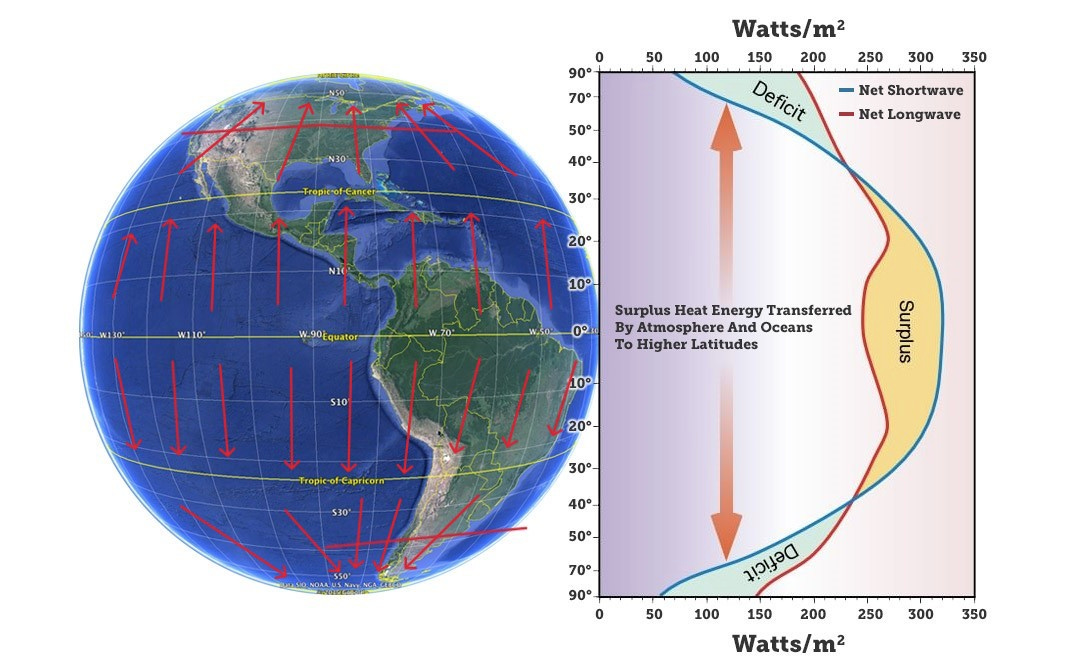
We know, that as it moves from the Equator to the Poles some of this energy is lost.

It “bleeds” off into the friction of doing “work” like moving air and water. It gets lost into space from the atmosphere. It melts ice (about 3% of all the energy the earth receives annually is absorbed by melting ice and snow each year).
We know, that the HEAT ENERGY that's left, winds up at the North Pole.
We know, that some of this ENERGY bleeds out of the Climate System during the Polar Winter.
WHAT WE DID NOT KNOW, during the 70’s, 80’s, and 90’s when we decided it was probably safe to keep burning fossil fuels. Was if the Poles would act like the radiator in “Case One” or the radiator in “Case Two”.

Now we know, it was Case Two.
The Arctic has warmed nearly four times faster than the globe since 1979
Communications Earth & Environment volume 3, Article number: 168 (Aug 2022)
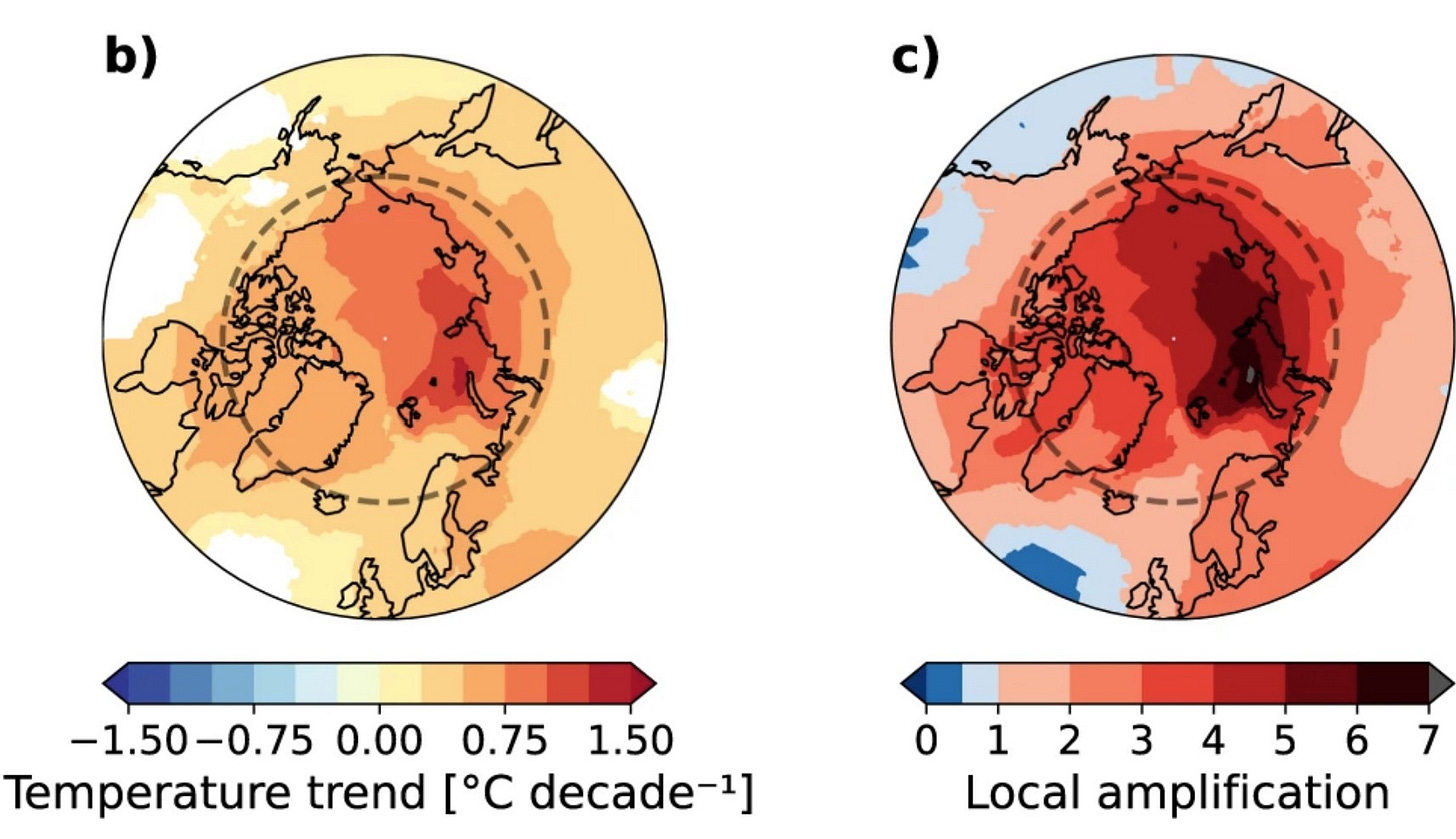
What graphic “b” is saying, it that about 50% of the Arctic Polar Zone has been warming at a rate of AT LEAST 0.75C per decade since 1979. Parts of it have been warming at a rate of 1.5C per decade.
What graphic “c” is showing, is the AMPLIFICATION of warming that results from this accumulating HEAT ENERGY. Areas of the Arctic Polar Zone have warmed as much as +7C since 1979. Most of it has warmed +3C to +4C.
+1C of warming at the Equator is resulting in +4C to +7C in the Arctic.
The effect of ACCUMULATION, is the AMPLIFICATION of INPUTS.
Which raises the question of how much hotter will the Arctic get before a new balance is restored?
Here's what we know from looking at the past.

If the poles acted like the radiator in “Case One”. Then the “extra” ENERGY captured in the Tropics would flow to the Poles and be “radiated out” of the Climate System. A +1C increase at the Equator should result in no more than a +1C increase at the Poles.
What the paleoclimate record tells us, is that the Earth’s Climate System works more like “Case Two”.

In this graphic there are seven different “climate states” shown for a variety of different periods of the Earth. The way to use the graph, is to pick the state each of the poles is currently in and average the results to get the “actual” climate state of the planet.
Our “modern climate state” is a 5/7 combination of gradients.

During the PETM (Paleocene–Eocene Thermal Maximum) 55mya temperatures rose in the Arctic Circle so much that it became about as warm as Florida is now. Remaining “ice free” during the polar winter.

This would have had a gradient something like this.

Which indicates that a +20C increase at the Equator resulted in a +35C response in the Arctic Zone. Which is how the Arctic becomes hot enough for alligators to live there year round. The oceans were so HOT. That even during the polar winter, there is enough heat in them to maintain the Winter temperature at a level comparable to a winter in modern day Florida.
The effect of ACCUMULATION, is the AMPLIFICATION of INPUTS.
Because Climate Sensitivity is higher when CO2 levels are lower. The 140ppm of CO2 we have put into the atmosphere has probably shifted our climate state from the current 5/7 curve to a new 3/5 curve.

Indicating the the Arctic Zone could warm by about +20C before THERMAL EQUILIBRIUM is reached.
At the current 0.36C per decade rate of warming, the Arctic is warming at about 1.5C per decade. Which means it could reach that level of warming in roughly 105 years from now, in about 2130.
ASSUMING THAT THINGS DON’T GET WORSE.
The Crisis Report - 36
The World’s Forests are Burning, Ecosystem Turnover is the Cause. Let’s All be Really Clear on What that Means.

Temperatures in the far North are about to rise EXPLOSIVELY.
The consequences are going to be SEVERE.
Because,
The effect of ACCUMULATION, is the AMPLIFICATION of INPUTS.
And we keep “revving” the engine.
This is my analysis.
This is what I see.
This is my “Crisis Report”.
— rc
Scheduled for release 06/10/23 while I am on vacation and AfK.








